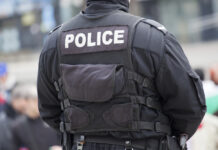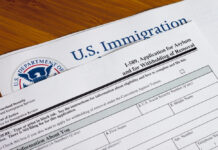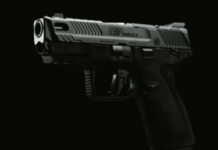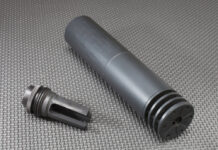Living in a homesteading lifestyle has its benefits – no doubt about it. However, it comes with its fair share of inconveniences too. And chief among those inconveniences is the fact that you’re in an especially vulnerable position if the winter decides to cut off your power.
Despite the fact that homesteaders are really self-sufficient and able to supply many of their own resources, getting stranded in a winter blackout can be a dangerous situation.
Thankfully, Off the Grid News has a great list of the 6 items every homesteader should have on-hand in the event of a winter storm that cuts off power, halts transportation, and downright puts your life on hold.
Here it is:
Many people prepare for winter weather by putting together a winter survival kit in their car. But too few prepare an additional kit for their home, which can leave them unprepared when a winter ice or snowstorm hits and leaves them trapped there. Because preparing your house for a winter storm is a significantly larger and more complicated undertaking than doing the same for your car, here’s a few tips to help you out:
1. Alternative source of heat
A winter snowstorm that knocks the power out will leave you with a cold house unless you have a heat source that doesn’t require electricity. Don’t be surprised if the inside of your home quickly drops to 40 degrees Fahrenheit when the power goes out. In this case, having plenty of blankets and warm clothing is essential.
But you’ll also need an alternative source of heat – such as kerosene – to keep your house warm until the power returns. Always check up on your alternative heat source to make sure it is operational and clean.
2. Food
It’s essential to keep plenty of food in your house for emergencies, but we all know that canned food and bottled water will not last forever. That’s why you should rotate your food and water in the pantry so you’ll always have plenty of fresh food and water available.
You also would be wise to set aside specific food for emergencies and emergencies only, and rotate this food out at least once every six months.
3. Flashlights and batteries
It’s very likely that your power will be out if you’re stuck in your house from an ice or snowstorm. Having plenty of flashlights of varying kinds is imperative. You’ll also need plenty of extra batteries as well.
4. Tools
You’ll want to have the necessary tools on hand to make any needed repairs that result from a winter storm. If the branch of a tree falls and breaks a window, it’s much more critical to fix it when it’s freezing outside than when it’s summertime. Examples of tools to have on standby include a hammer and nails, screwdrivers, heavy duty plastic sheeting, and duct tape. These kinds of tools and materials won’t allow you to build things from scratch or fix things permanently, but should help you make emergency repairs that will hold until the storm passes.
While we’re talking about tools, remember that you’re not prepared for a winter snowstorm if you don’t have at least a couple of snow shovels on hand to dig your way out. Make sure that your shovels are in your home and not outside or in a shed that’s separated from your house. Have several different ones in case one breaks or so that multiple people can shovel a pathway out at the same time.
5. Communication
Phone lines can be damaged by ice and wind, although it’s unlikely that an entire cellular network will be wiped out. Keep your cell or smartphone fully charged and make sure to have a backup batter source, as well as a car charger for your phone, in case the power goes out. Including walkie-talkies in your winter survival kit is a good idea as they can help you stay in contact with family and friends. Radios that run on batteries also are wise to have so you can learn about what’s going on in the outside world.
6. Evacuation vehicle
If a medical emergency happens or your house is significantly damaged and not safe to stay in, you will need some type of transportation. This is why you would be very wise to invest in snowmobiles or at least some sort of vehicle that is made to run quickly through the snow. Snowmobiles are preferable to your car in this case, because your car may be snowed in or it may not be made for icy, winter environments. Make sure that your snowmobile is filled with gasoline, fully operational, and within easy access from your house. Ideally, each snowmobile should have a can of extra fuel, snowshoes, and a winter survival pack tied to the rear behind the seat.
What are your thoughts on homesteader essentials for a winter white out / black out?
Give us your input in the comments.







![Are Compensators Worth It? [Video]](https://preparedgunowners.com/wp-content/uploads/2025/07/Depositphotos_815431992_S-218x150.jpg)






![Would-Be Robber Takes The Tueller Drill Challenge [Video]](https://preparedgunowners.com/wp-content/uploads/2025/10/Depositphotos_50626839_S-218x150.jpg)
















![Optic Ready vs Milled slides? [Video]](https://preparedgunowners.com/wp-content/uploads/2024/02/image-3-100x70.png)
![[Checklist] What Gear You Need To Take Pistol, Rifle & Shotgun Training Courses [Video]](https://preparedgunowners.com/wp-content/uploads/2023/07/Depositphotos_275087632_L-100x70.jpg)
![What is in Carter’s 2023 EDC? [Video]](https://preparedgunowners.com/wp-content/uploads/2023/07/Depositphotos_146856137_L-100x70.jpg)



Now that winter is almost gone, these tips will still aid you in the non-winter pains that plague us. Storms, floods, droughts etc. I rarely had trouble in the winter because we were prepared, but the ‘nicer-weather’ storms used to catch me napping.
Comments are closed.